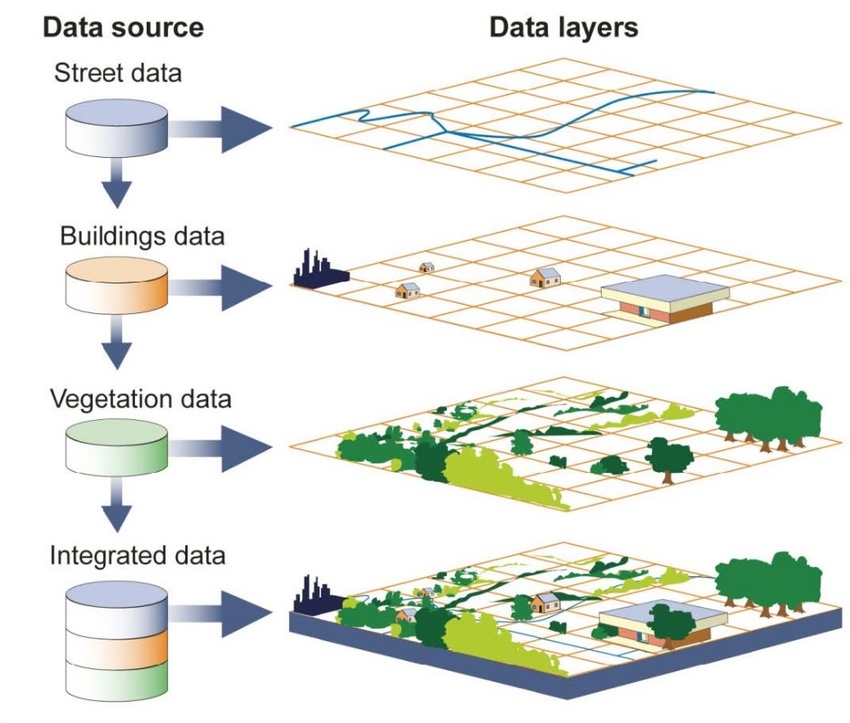Latest GIS practices and integrating them with your design workflow
Geographic Information System (GIS) mapping and consulting services in Dallas, Texas and New York, USA. At TopBIM, we automate GIS data generation and convert it to BIM-ready formats empowering smart, location-focused construction and infrastructure management.
GIS Technologies Used for Dallas & New York Projects
GIS deploys geospatial technologies or integrates other information systems for leveraging the visualization of geospatial data
Remote sensing technologies are deployed to scan the physical information about the targeted area. Technologies used to assist in remote sensing are satellites, drones, LiDAR, and photogrammetry.
The Internet of Things is the network of smart devices that works to amplify the work of GPS in GIS. The GPS receiver is the central component of this context. These technologies facilitate the collection of geographical data
GPS brings in the particularity to map’s data. It is for capturing and documenting real-time data on a specific location.
The integration of GIS tools with other application workflows and putting them in a comprehensive visualization comes under this service.

From site selection to project management, we leverage spatial intelligence
With more than 151+ projects we have done so far, the majority of them were large public infrastructures. TopBIM delivers these core GIS services across Dallas, TX and New York, USA:
Converting the captured geographical data into computer-readable form. This data is then manipulated on GIS mapping software for integration and deployment.
We process, analyze, and visualize the GIS mapping data collected by light detection and ranging sensors in our drawing environment.
Parcel maps also touted as property maps are particularly used for the explicit demarcation of properties on the map.
Interpreting multiple photographs captured by remote sensing technologies, to a sensible 3D model that can be utilized in your BIM workflow.
Topographical maps are intended for recording detailed physical attributes such as positioning and elevation, for a particular area of landmass.
We transform the GIS data into a comprehensible digital map format from multiple sources.
This process acts as a central component in the whole GIS service for building development. The collected GIS data can be translated into multiple formats as per their suitable use.
Before starting on any GIS requirement, we determine the precise goal of the project.
Tuned to this, the use of tools and workflow integration is figured out.
Then, the right set of data has to be sought out to visualize the tangible stakes on the project site.
Finally, the most suitable BIM and GIS integration workflow benefits the project with the data extracted and further visualized.
With this much experience, we can deploy datasets from our past project to optimize the BIM-GIS integrated workflow
Not only the selection of state-of-the-art tools but also the human pool that has experience in managing the most complex GIS requirements
In general, GIS is needed for big AEC public infrastructure projects. Therefore, with our in-house skillset, we keep up with the pace and perfection required for the project.
GIS has varied applications but if you specifically need it for design-build operations, Top BIM Company has got all that it takes to deliver the expectations.
Enhance design decision-making and streamline intelligent development effortlessly through our rapid BIM-GIS integration.

Our offerings include GIS data capture, LiDAR processing, parcel mapping, photogrammetry, and conversion to BIM-ready formats - deployed in both Dallas, TX and New York, USA.
We leverage tools like ArcGIS, QGIS, GRASS, and MapInfo to support spatial workflows tailored to regional standards in New York and Texas.
Let’s discuss your project scope, local data layers, regulatory needs, and deliverable formats specific to your region - whether Manhattan’s urban environment or Dallas’s metropolitan infrastructure.
When evaluating GIS service providers, one should consider their experience especially their ability to handle large complex projects. Second, your operations need and location should be compatible with your selected GIS service provider. This can be analyzed through the provider’s clientele and past work.
Costs depend on factors like data type, area coverage, complexity, and format. Typical SDS - based scanning or mapping rates vary between TX and NYC markets. Contact us with your zip code for a custom quote.